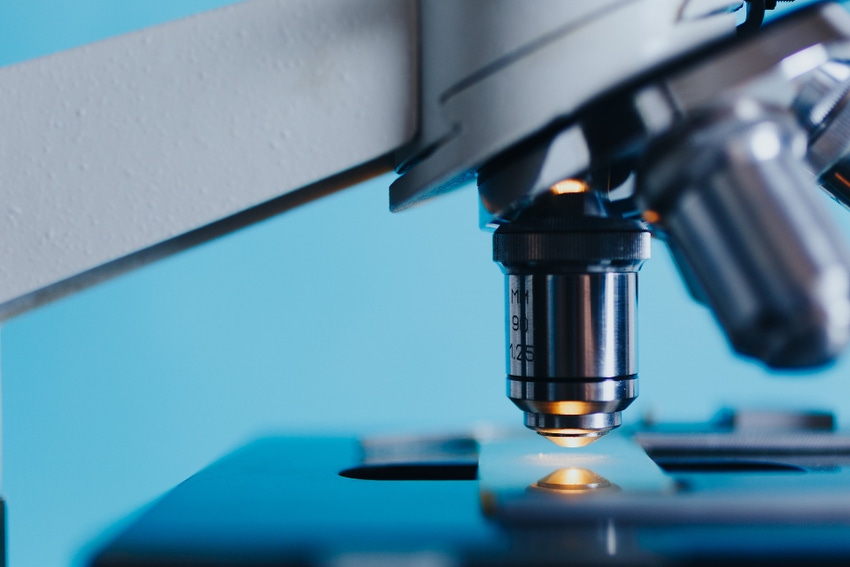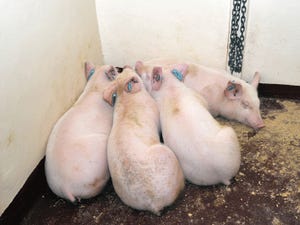SHIC develops new Salmonella fact sheet
Emerging serotype in swine has become one of the most identified serotypes in pigs, pork, and humans worldwide.
April 29, 2021

Salmonella 1,4,[5],12:i:-, an emerging serotype in swine, has become one of the most identified serotypes in pigs, pork, and humans worldwide. It captured the attention of an American Association of Swine Veterinarians member who recommended the Swine Health Information Center (SHIC) develop a fact sheet on this bacteria for the benefit of the U.S. pork industry. As a result, the new S. 1,4,[5],12:i:- Fact Sheet has been posted and contains valuable information on the serotype. This project represents SHIC’s mission of responding to industry needs.
The main serotypes associated with clinical salmonellosis in pigs are S. typhimurium and S. 1,4,[5],12:i:-. Enterocolitis and septicemia can be seen. Most pigs recover but they may shed bacteria for months after resolution of clinical signs. Swine are also subclinical carriers of S. 1,4,[5],12:i:- and many other Salmonella serotypes. In carrier animals, shedding is exacerbated by stress including commingling, transport, and food deprivation.
Salmonella spp. can survive for long periods in the environment and are isolated from many sources.
For disinfection purposes, Salmonellae are generally susceptible to 1% sodium hypochlorite, 70% ethanol, 70% propanol, 2% glutaraldehyde, and 4% formaldehyde, as well as phenol, peracetic acid, hydrogen peroxide, quaternary ammonium compounds, and iodophors. A study of S. 1,4,[5],12:i:- in swine slaughterhouses found that isolates were susceptible to 0.5% peracetic acid, 1% peracetic acid, and 0.5% quaternary ammonium.
To prevent shedding in carrier animals, reduce environmental and transport-related stress. Additionally, pens and contaminated fomites must be cleaned and disinfected thoroughly to reduce Salmonella load in the environment. Producers should keep feed in rodent-proof containers to prevent contamination.
Antimicrobials are not indicated for treatment of subclinical salmonellosis. Most Salmonella transmission is fecal-oral. However, direct pig-to-pig transmission, inhalation, and vertical transmission also occur.
To diagnose, culture and biochemical testing are used to identify Salmonella, but subtyping is necessary to determine serotype. Techniques used for subtyping include classical serotyping (White-Kauffman scheme), pulsed field gel electrophoresis (PFGE), multiple locus variable number of tandem repeats (MLVA), multilocus sequence typing (MLST), and whole genome sequencing (WGS).
PCR assays are not used for routine diagnosis, but several assays have been described that can differentiate S. 1,4,[5],12:i:- from S. typhimurium. ELISAs may be useful for herd-level screening, and there are several commercial assays available based on lipopolysaccharide (LPS) O-antigen that can identify Salmonella to the serogroup level. For pigs with diarrhea, pooled ileum, colon, and ileocecal lymph node are preferred for culture. Feces or tonsil scrapings can be collected from live pigs. In cases of septicemia, blood, lung, liver, and spleen are acceptable. Most ELISAs can be used with serum or meat juice. In addition, oral fluids may be useful as a surveillance tool.
Antimicrobial treatment is indicated for pigs with clinical signs and lesions suggestive of salmonellosis. Treatment regimens should be based on antibiograms, especially for emerging serotypes like S. 1,4,[5],12:i:- that often demonstrate multi-drug resistance.
Per fact sheet, nontyphoidal Salmonella are a leading cause of foodborne infections in humans. Animals are reservoirs for many salmonellae, including S. 1,4,[5],12:i:-, a monophasic variant of Salmonella typhimurium. Isolates are often resistant to multiple antimicrobials and heavy metals, making S. 1,4,[5],12:i:- a public health concern.
Further information on pathogenesis, epidemiology, etiology, and immunity, along with all references for data, are included in fact sheet.
Source: SHIC, who is solely responsible for the information provided, and wholly owns the information. Informa Business Media and all its subsidiaries are not responsible for any of the content contained in this information asset. The opinions of this writer are not necessarily those of Farm Progress/Informa.
You May Also Like



